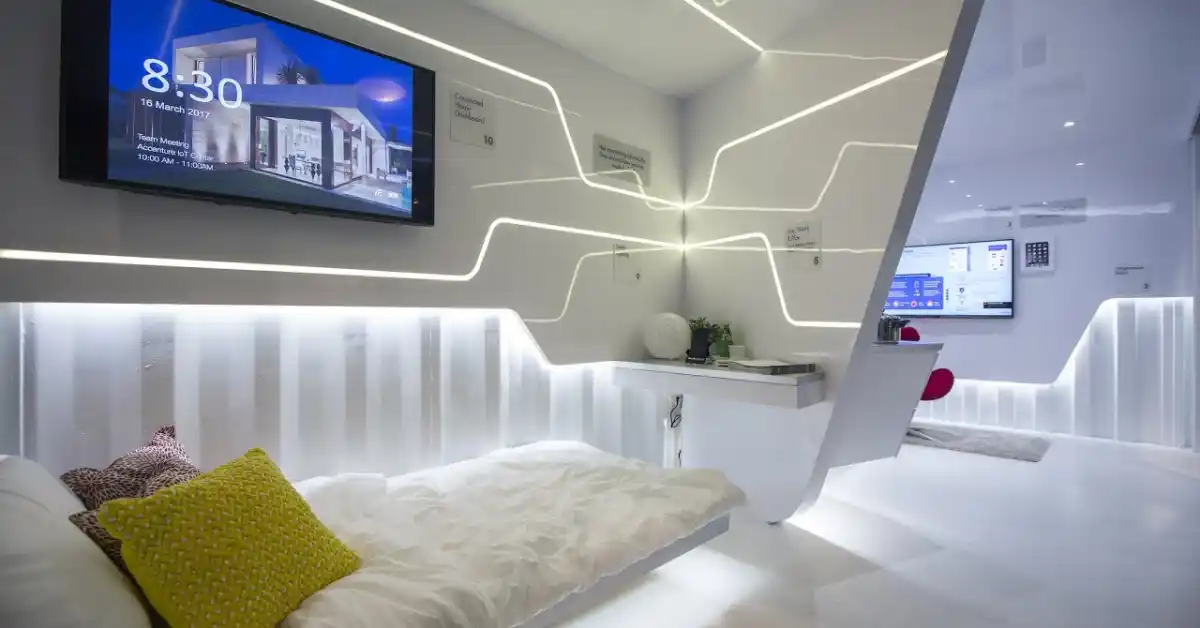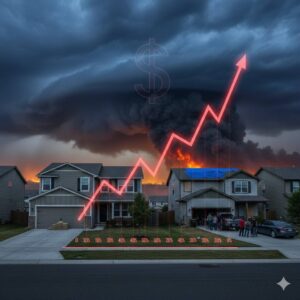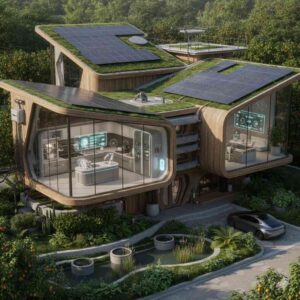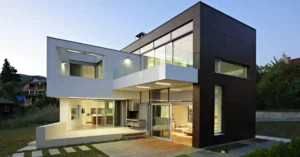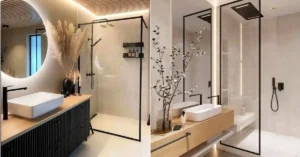What Is Smart Living?
Smart Living refers to the integration of technology, automation, and energy efficiency into homes to make everyday life safer, more convenient, and cost-effective. In 2025, this concept has evolved far beyond simple voice assistants—it now combines AI-powered devices, solar energy, and fully connected ecosystems that work together to improve comfort, security, and sustainability.
Quick Answer: Smart Living in 2025 means using artificial intelligence, renewable energy, and automation to save money, reduce energy waste, improve home safety, and increase property value.
Why Smart Living Matters in 2025
The Future of Connected Homes
The shift toward smart homes isn’t just a luxury trend—it’s becoming essential for modern living. Here’s why:
Rising Energy Costs → Smart thermostats, solar systems, and efficient appliances reduce bills.
Home Security Concerns → Smart cameras, locks, and alarms deter break-ins and provide peace of mind.
Convenience & Lifestyle → Voice assistants, automated lighting, and AI-powered routines simplify daily life.
Eco-Friendly Living → Energy monitoring + clean energy adoption lowers carbon footprints.
Property Value Boost → According to real estate data, homes with smart upgrades sell 10–15% higher.
Smart Living Trends in 2025
Technology is evolving fast. Here are the biggest connected home trends shaping the future:
AI Home Assistants – Alexa, Google, and Siri are now deeply integrated with appliances, security, and entertainment.
Solar + Battery Systems – Energy independence is becoming mainstream, with EV batteries supporting homes.
Smart Security Ecosystems – Cameras, sensors, and smart locks all connected under one platform.
IoT Appliances – Refrigerators, ovens, washing machines, and HVAC systems controlled via apps.
Sustainable Smart Homes – Devices designed to save water, electricity, and heating resources.
Benefits of Smart Living
1. Energy Savings
A smart thermostat, LED lighting, and solar panels can reduce energy costs by 20–40% annually. For a typical U.S. household, that means saving $1,000–$2,500 per year.
2. Safety & Security
Smart alarms, motion detectors, and AI-powered cameras provide 24/7 protection with real-time alerts. Insurance companies even offer discounts for smart security systems.
3. Lifestyle & Comfort
Voice-activated controls, automated lighting, and personalized entertainment routines create a home that adapts to you.
4. Resale Value
A 2025 Zillow report shows that homes with solar panels, smart security, and automation sell for $20,000–$50,000 more on average.
Cost of Smart Living Upgrades in 2025
| Upgrade | Avg. Cost | Savings/Benefit |
|---|---|---|
| Smart Thermostat | $150–$300 | 10–15% lower heating/cooling costs |
| Smart Lighting | $200–$800 | 20% lower electricity bills |
| Smart Security System | $300–$1,500 | Enhanced safety + insurance discounts |
| Solar Panel System | $15,000–$30,000 | $40,000+ lifetime savings |
| Smart Appliances | $500–$5,000 | Energy efficiency + convenience |
Smart Living by Category
1. Solar Energy
Lower bills with renewable energy.
Federal + state incentives in 2025 make solar 30% more affordable.
Return on investment in 6–9 years.
2. Smart Home Security
AI-powered cameras detect unusual activity.
Smart locks provide keyless entry.
24/7 monitoring reduces burglary and package theft.
Homeowners save 5–10% on insurance premiums.
3. Smart Upgrades & Automation
Smart thermostats, lights, and appliances reduce waste.
Energy monitoring tools show real-time usage.
AI routines personalize your home environment.
How to Start a Smart Living Upgrade
Audit Your Home Needs → Assess energy use, security, and lifestyle goals.
Set a Budget → Start with smaller upgrades (smart thermostats, cameras) or invest big (solar + whole-home automation).
Choose an Ecosystem → Amazon Alexa, Google Home, or Apple HomeKit.
Install Smart Devices → DIY for basic gadgets, hire pros for solar/security systems.
Track ROI → Use apps to monitor savings, security, and efficiency.
Challenges of Smart Living in 2025
While exciting, Smart Living comes with challenges:
Upfront Costs – Solar and automation can be expensive without incentives.
Privacy Concerns – Connected devices raise questions about data security.
Compatibility Issues – Not all smart devices work across ecosystems.
Learning Curve – Families need time to adapt to automation.
The Future of Smart Living Beyond 2025
Fully Autonomous Homes – AI running lighting, heating, grocery restocking, and security.
Vehicle-to-Home Energy – Electric cars doubling as home power storage.
Smart Neighborhoods – Shared solar grids, community-wide Wi-Fi, and integrated security.
Net-Zero Energy Homes – Homes producing as much energy as they consume becoming the new standard.
Conclusion
Smart Living in 2025 is no longer futuristic—it’s mainstream. With solar energy, AI-powered security, and home automation, families enjoy lower bills, greater safety, and higher property value.
Investing in connected homes and smart upgrades today not only improves lifestyle but also builds a foundation for sustainable, efficient, and future-ready living.
Smart Living is the future of housing. The sooner you start, the sooner you’ll benefit from comfort, savings, and peace of mind.

